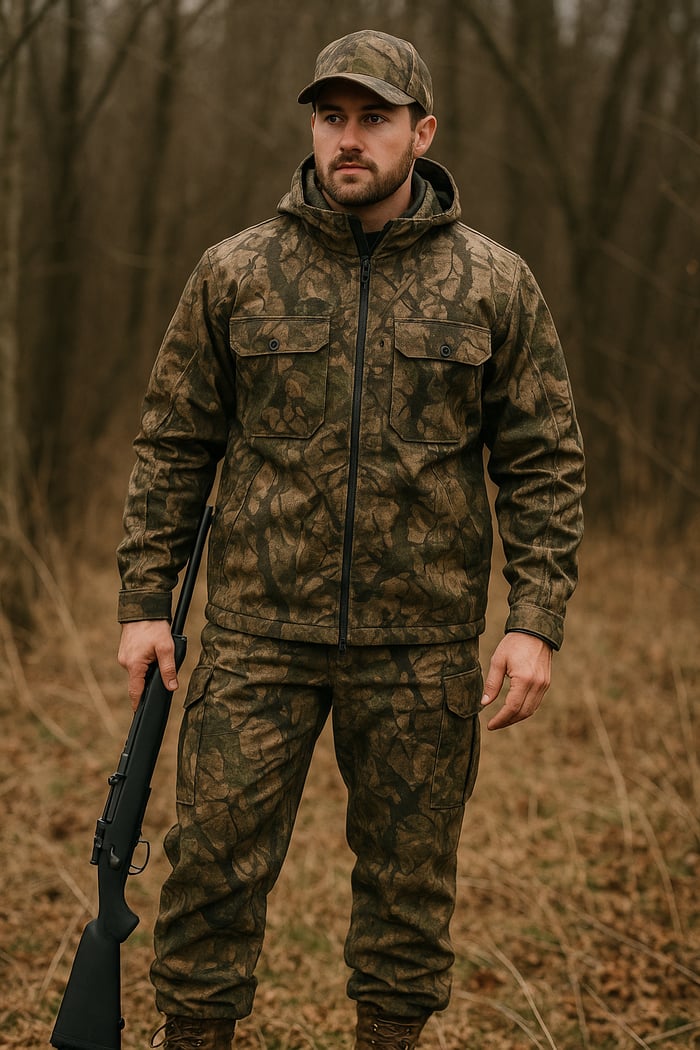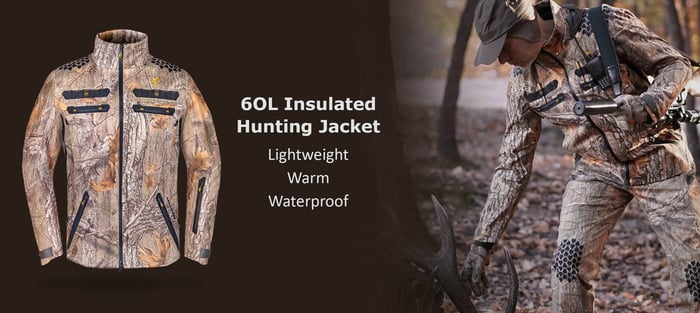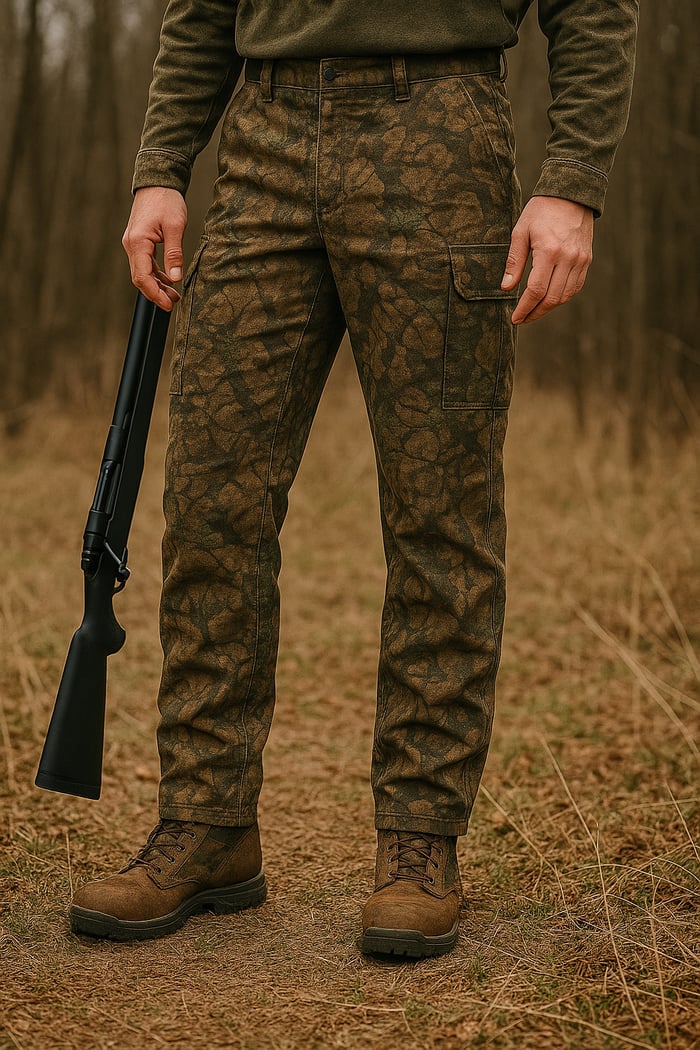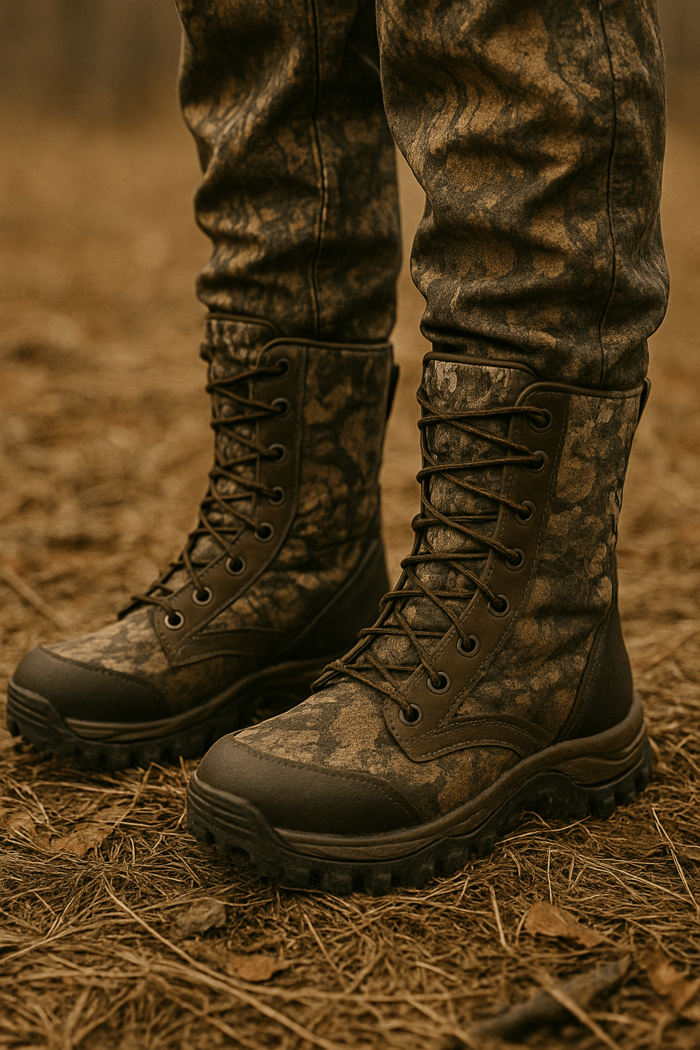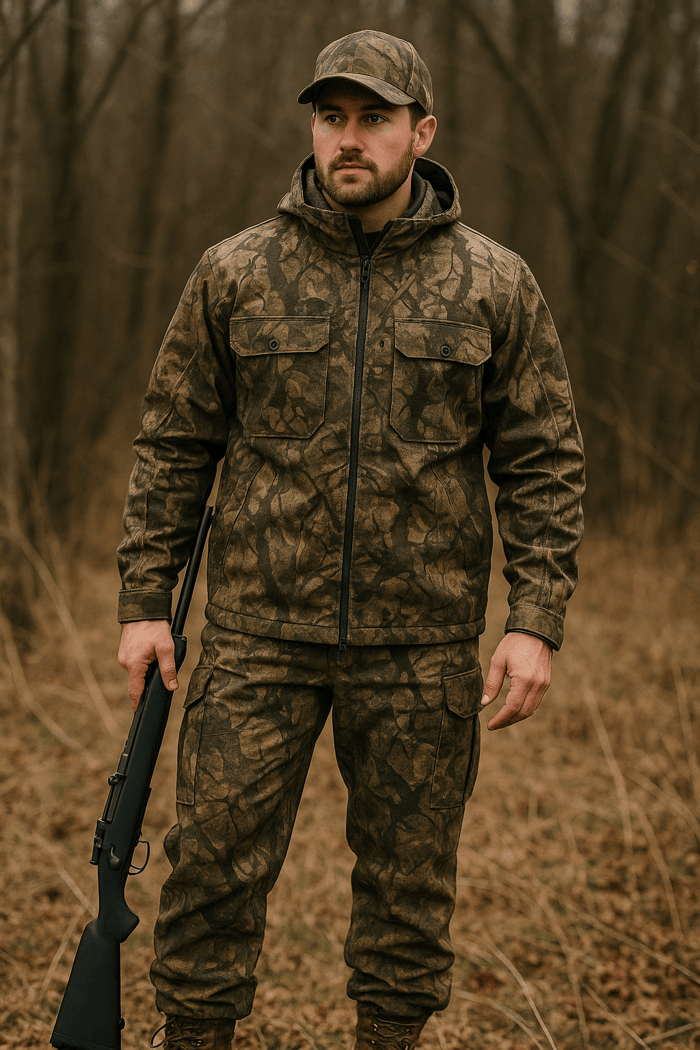The Comprehensive Guide to Selecting Hunting Clothes for All Seasons and Terrains
Hunting is a timeless pursuit that blends skill, patience, and a deep connection with the outdoors. Whether you’re a beginner tracking your first deer or a seasoned hunter chasing big game in remote wilderness, one thing remains constant: the importance of choosing the right hunting clothes. Your hunting attire is not just clothing—your first defense against the weather, your means of remaining unseen by keen-eyed wildlife, and your pass to remaining comfortable over long days afield. Throughout this in-depth 3,000-word manual, we're going to take a look at all you want to know regarding choosing hunting apparel that will help you perform better, stay safe, and enjoy yourself more. From seasonal needs to high-tech features, we've got you covered with real-world advice and actionable tips.
Why Hunting Clothing Is Key to Success
When you venture out into the wild, each bit of equipment counts, but hunting clothing is perhaps the most important. Unlike ordinary outdoor apparel, hunting clothing is specifically designed to address the special requirements of the sport. They keep you safe from bad weather, hide you from suspicious game, and enable you to travel unencumbered in difficult terrain. Ill-fitting hunting attire can cause discomfort, noise, or even scare off your quarry, while proper equipment can provide a huge advantage.
The Role of Comfort in Hunting Clothes
Comfort is not an option when it comes to hunting apparel. Picture yourself in a tree stand for several hours shivering in freezing temperatures or trudging through thick underbrush in the hot sun. Without comfortable hunting apparel, you'll be preoccupied with sweat, chills, or chafing that can spoil your concentration and your hunt. Quality hunting apparel is made to keep you comfortable so you can focus on tracking, sighting in, and making your shot.
Search for hunting apparel that has breathable material, moisture-wicking ability, and a design that allows a full range of motion. Crawling through brambles, climbing boulder-strewn slopes, or drawing a bow: your hunting apparel should feel like a part of you, not an impediment.
Safety and Visibility with Hunting Apparel
Safety is yet another essential factor in hunting apparel. In most places, hunters must wear blaze orange or fluorescent hunting attire during specific seasons for the purpose of visibility to other hunters. Even if it is not enforced, adding blaze orange vests, hats, or bands to your hunting attire is a good idea for remaining safe without sacrificing stealth. Today's hunting apparel is usually a compromise between camouflage and safety options, enabling you to be hidden in your surroundings but still be visible to other people.
Top Features to Consider in Hunting Apparel
All hunting apparel is not the same. To select equipment that works when you are out in the field, you have to learn about features that really count. Below are the essentials to look for when buying hunting apparel.
1. Camouflage Patterns for Ultimate Stealth
Camouflage is the key to successful hunting attire. The right camo pattern can make you all but invisible to game animals, whose eyes are frequently very sharp. Well-known patterns such as Realtree, Mossy Oak, Kryptek, and MultiCam are designed to replicate various environments, ranging from thick forests to open plains.
When picking out hunting attire, pick a camouflage design that complements your hunting landscape. For instance, dark greens and browns are great for dense forests, but lighter and more open designs work well for grassy or rocky landscapes. Some hunting attire has universal, multi-season designs that respond to a wide range of landscapes, and these types of designs can make their owners a wonderful investment if they hunt in various areas.
2. Weather Resistance for All Conditions
Weather is unpredictable, and your hunting attire must keep you dry regardless. Water-resistant or waterproof hunting attire is a must for staying dry in rain, snow, or morning dew. Opt for gear with advanced coatings or membranes such as Gore-Tex, which provide breathability while keeping moisture out.
Windproof hunting clothes are equally important, especially in open or high-altitude areas where cold gusts can sap your body heat. For extreme conditions, consider hunting clothes with insulated linings or thermal fabrics to maintain warmth without adding bulk.
3. Durability for Rugged Environments
Hunting usually subjects you to harsh landscapes with thorns, sharp stones, and entangled twigs. Your hunting attire should be strong enough to withstand these conditions without ripping or deteriorating. Seek hunting attire with reinforced seams, ripstop materials, and abrasion-resistant fabrics. Double-layered knees or elbows can provide additional strength to high-wear points, making your hunting attire last for several seasons.
4. Scent Control for Elusive Game
Most game animals, including deer, elk, and bears, possess a highly developed sense of smell that can pick up on human scents from hundreds of yards. To remain unseen, contemporary hunting attire now includes scent-control technologies, like carbon or silver-ion treatments. These elements eliminate or cover up your scent, providing you with a stealthy edge. Combine scent-control hunting attire with odor-destroying sprays and good hygiene habits for maximum effectiveness.
5. Silent Fabrics for Sneak Movement
Noise is sometimes a hunter's greatest enemy. Crinkling fabric or squeaking material will warn game that you are approaching, spoiling your opportunity at a shot. Quality hunting apparel is made to be quiet, with gentle, stretchy fabric that makes very little noise as you move. Try out your hunting apparel ahead of time to make sure they won't betray you when stalking or repositioning.
Choosing Hunting Clothes by Season
Hunting conditions vary widely depending on the time of year, and your hunting clothes need to adapt accordingly. Below, we’ll explore how to select hunting clothes for each season to stay comfortable and effective.
Spring Hunting Clothes: Lightweight and Versatile
Spring hunting usually entails gentle temperatures, frequent rain, and breaking foliage. Your spring hunting attire should be water-resistant, lightweight, and breathable to manage wet weather. A standard spring hunting outfit can include:
Base Layer: Sweating-wicking hunting attire to prevent sweat from touching your skin.
Mid-Layer: Lightweight fleece or softshell jacket for insulation on cold mornings.
Outer Layer: Waterproof but breathable rain jacket to guard against showers.
Select hunting attire with green-dominant camouflage prints to camouflage in spring's emerging forests and fields. Ventilation details, such as zippered vents, can control your temperature while engaged in action pursuits.
Summer Hunting Attire: Cool and Protected
Summer hunts can be miserably hot, particularly in open landscapes or in humid environments. Your hunting attire must focus on breathability and sun protection while keeping insects and scratches at bay. A summer gear may consist of:
Base Layer: Super-lightweight, moisture-wicking tops and bottoms to keep cool.
Outer Layer: A lightweight, long-sleeve top for UV and tick protection.
Seek hunting attire with mesh panels or ventilation zippers to enhance air flow. Camo patterns that are light or neutral colors function best for dry grass and open terrain of summer.
Fall Hunting Attire: Layering for Variable Weather
Fall is an excellent hunting season, with cooler weather, colorful foliage, and unpredictable weather. Layering is essential for fall hunting attire, as mornings may be frosty but warm up in the afternoons. A practical fall ensemble consists of:
Base Layer: Medium-weight, moisture-wicking hunting attire for warmth and sweat management.
Mid-Layer: An insulating fleece or lightweight puffy jacket for cold beginnings.
Outer Layer: A windproof and water-repellent jacket to repel rain and wind.
Choose hunting attire with transitional or woodland camo patterns to complement fall's combination of green, brown, and orange colors. Adjustable cuffs and hoods can assist you in adjusting your equipment as conditions shift.
Winter Hunting Attire: Fighting Extreme Cold
Winter hunting calls for hunting attire that emphasizes warmth, insulation, and weather resistance. Freezing temperatures, snow, and biting winds necessitate a solid layering system:
Base Layer: Heavyweight, moisture-wicking hunting attire to retain body heat.
Mid-Layer: A heavy fleece or down parka for maximum insulation.
Outer Layer: A completely waterproof and insulated parka to protect against wind and snow.
Choose hunting apparel with white or snow camo patterns to break up in winter environments. Additional accessories such as insulated gloves, balaclavas, and chemical hand warmers also come in handy to keep warm during extended sits.
Learning to Master Layering Techniques for Hunting Apparel
Layering is the key to a productive hunting attire, as you can modify according to changing temperatures and activity levels. With an assortment of hunting attire, you are able to remain comfortable throughout the day. Follow these steps to layer appropriately:
Base Layer: Begin with sweat-wicking hunting attire made of synthetic or merino wool. These keep you dry by pushing sweat away from your skin so that you do not feel cold during times of little activity.
Mid-Layer: Include insulation made from fleece, down, or synthetic jackets. Opt for hunting attire that is warm but not too bulky to ensure mobility.
Outer Layer: Your outer hunting attire must be weatherproof and hardwearing. Opt for jackets and trousers featuring sealed seams, adjustable hoods, and a lot of pockets to store gear.
Steer clear of cotton on your hunting gear, as it retains water and will leave you feeling colder. Opt for outdoor activity-specific performance fabrics instead.
Top Brands with High-Quality Hunting Clothes
With so many brands available, choosing the perfect hunting clothes seems overwhelming. To make it easier for you to decide, below are some top brands renowned for their high-quality hunting clothes:
Sitka Gear: A high-end option for hunting attire with the latest materials, innovative patterns, and highly successful camo designs.
Under Armour: Popular for reasonably priced hunting attire with outstanding moisture-wicking and scent-control capabilities, ideal for penny-pinchers.
Cabela's: Provides an extensive variety of long-lasting, reasonably priced hunting attire for every season and style of hunting.
Kuiu: Dedicates itself to lightweight, high-end hunting attire developed for backcountry hunters who require mobility and endurance.
First Lite: Emphasizes merino wool-based hunting apparel that performs well in temperature control and odor management.
Every brand has hunting apparel that suits various budgets, environments, and tastes, so spend time browsing their lines.
Must-Have Accessories to Wear with Hunting Apparel
Your hunting clothes are only part of the equation. Accessories can enhance your comfort, safety, and efficiency in the field. Here are some must-have items to complement your hunting clothes:
Hunting Boots: Choose waterproof, insulated boots with aggressive tread for traction on slippery or uneven terrain.
Gloves: Lightweight gloves for warm weather or insulated ones for winter ensure dexterity while protecting your hands.
Hats and Face Masks: These warm you, cover your face, and blend with the camo pattern of your hunting apparel.
Backpacks: A backpack designed specifically for hunting will hold additional hunting attire, snacks, water, and brought-down game.
Binoculars and Rangefinders: Though not apparel, these instruments are a must-have for spotting and ranging game when dressed in your hunting apparel.
When choosing accessories, make sure they complement the weather resistance and camouflage of your hunting attire for an easy setup.
Maintaining Your Hunting Attire: Care Tips
Proper care ensures the maximum lifespan and performance of your hunting gear. To keep your equipment in good condition, follow the following tips:
Use Scent-Free Laundry Detergent: Wash hunting attire with a hunting detergent to eliminate odors without leaving a detectable fragrance.
Air Dry: Don't use dryers, as heat can destroy waterproof finishes, elastic materials, and camouflage patterns.
Store Properly: Store hunting attire in a dry, odor-free place, such as an airtight container, to avoid mildew and odors.
Inspect Regularly: Look for rips, frayed seams, or broken zippers, and repair them early to keep your hunting attire intact.
Regular care helps your hunting attire perform well, feel great, and be ready for every hunt.
Budget-Friendly Beginner Hunting Clothes
If you're just starting to hunt or on a tight budget, you don't have to break the bank to acquire quality hunting clothes. There are brands that provide value-for-money clothing that performs decently. Begin with multi-season hunting clothes that can be used across several seasons, like a lightweight camo jacket, moisture-wicking base layers, and heavy-duty pants.
You can also check second-hand shops, online stores, or end-of-season clearance for bargain hunting attire from established brands. Just make sure the equipment is still in proper condition and suits your hunting terrain. With time, you can make gradual upgrades to your hunting attire as your finances permit.
Advanced Considerations for Specialized Hunting Clothes
For hunters after particular game or hunting in special environments, specialized hunting attire can be a huge difference. Below are some advanced options to look at:
Bowhunting Attire: Bowhunters require hunting attire with a close fit to prevent interfering with the bowstring. Opt for articulated sleeves and low-profile designs.
Big Game Hunting Apparel: For elk, moose, or bear, select hunting apparel with added strength and odor control since these species are extremely vigilant.
Waterfowl Hunting Apparel: Hunters of waterfowl require completely waterproof hunting apparel with insulating liners to remain warm in soggy, marshy habitats.
Upland Hunting Apparel: Upland hunters take advantage of hunting apparel with armor-like patches and high-visibility accents for security in wide open spaces.
Customizing your hunting attire to your personal hunting style can enhance your comfort and success rate.
Safety Guidelines for Wearing Hunting Attire
Safety always comes first while hunting, and your hunting attire is an important part. Along with wearing blaze orange when necessary, observe the following safety guidelines:
Test for Noise: Make sure your hunting apparel is quiet as you walk. Test it by walking, crouching, or swinging your arms to see if it makes any noise.
Check Local Regulations: In some places, there are special regulations for hunting attire, like the amount of blaze orange you have to wear. Always follow to prevent fines or accidents.
Stay Visible in Low Light: When hunting during dawn or dusk, add reflective materials to your hunting attire to remain visible to others.
By keeping safety as a top priority, you can concentrate on the hunt with a clear conscience.
Final Thoughts on Choosing the Best Hunting Clothes
Selecting the right hunting clothes is a critical step toward a successful and enjoyable hunting experience. From camouflage patterns to weather resistance, every detail of your hunting clothes contributes to your performance in the field. By investing in high-quality gear, tailoring your outfit to the season, and maintaining your hunting clothes properly, you’ll be well-equipped to tackle any hunting challenge.
Whether you're tracking game in the heat of July or fighting a snowstorm in winter, the proper hunting apparel will have you comfortable, camouflaged, and ready to roll. Take the time to shop around, test different models, and create an arsenal of hunting apparel that's right for you. With the proper tools at your disposal, each hunt will be one to recall. Happy hunting!


